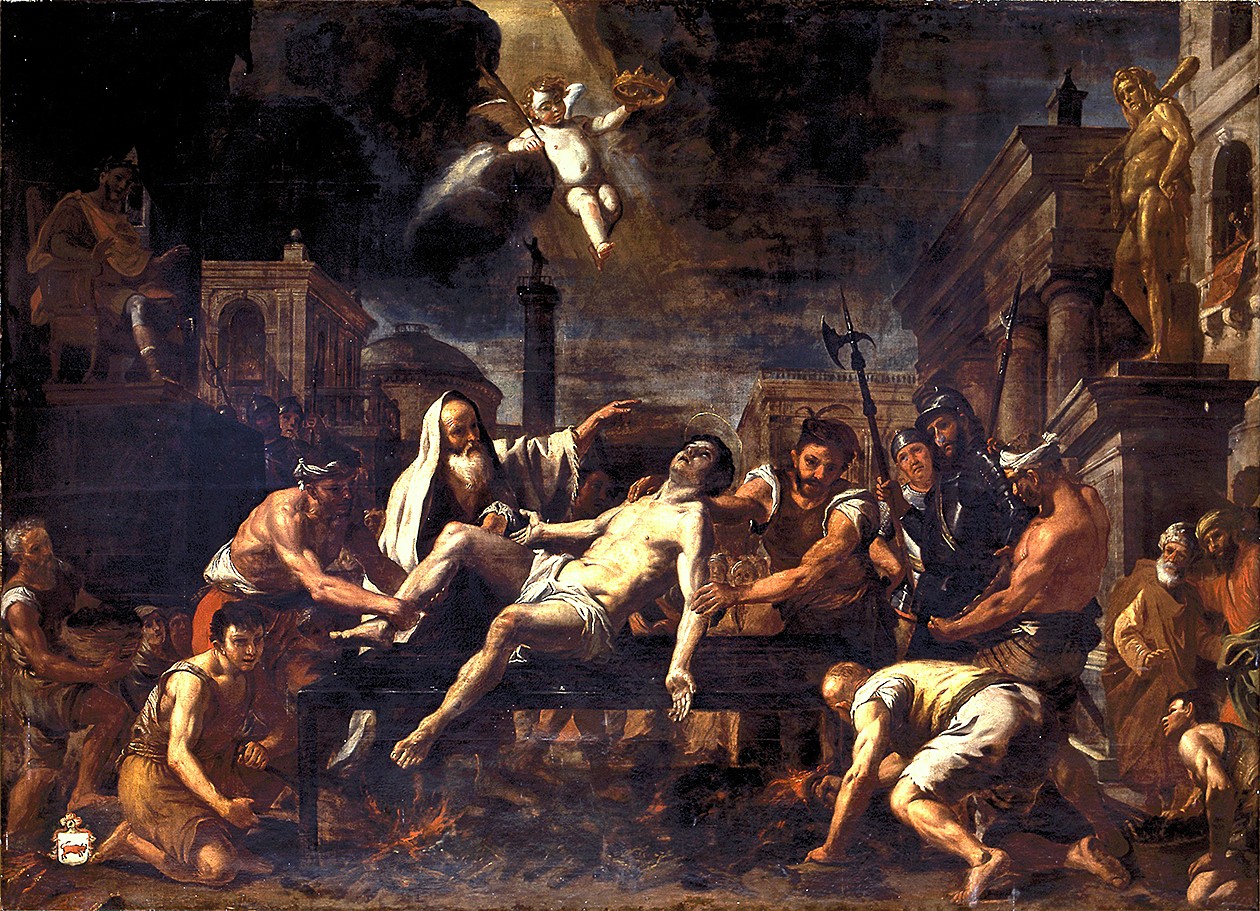
Saint Lawrence the Martyr and Hercules the Hero
Fourth Reflection on the Titular Painting of the Collegiate Church of Saint Lawrence, Birgu
The main movement of the painting occurs in the lower section of the canvas, where we seem to notice a semi-circular reversed arch, with its highest points being Cornelius, the Prefect of Rome, and the gilded idol upon a massive pedestal. Near Saint Lawrence, we also glimpse an elderly man—likely a pagan priest—pointing his finger at this false idol and making a final attempt to persuade Deacon Lawrence to change his mind and not waste his youth in vain. But Lawrence was resolute, and his “Amen” for Christ remained unwavering to the very end.
The elevated idol represents Hercules, who, strictly speaking, was not a god. Although he was the son of Jupiter, the god of the sky and king of the gods (the equivalent of Zeus in Greek mythology), his mother Alcmene was a mortal woman. As such, Hercules was still mortal—he had to die—but upon his death, he joined the gods of Olympus. Hercules is better known as a hero, both in Greek and Roman mythology: a defender of the weak and a great protector. In artistic depictions, he is often shown with a large club in hand—as seen here—through which he slew the giant Cacus, who terrorised the people of the Roman countryside with fire spewing from his mouth before the city was founded.
Despite the immoralities of his life—which were the norm in Greco-Roman culture—and notwithstanding his concern for those in need, Hercules the hero contrasts strongly with the martyr Saint Lawrence. The hero is admired for his courage, for some marvellous deed he performed, or for his noble qualities. In the story of the hero, the hero himself is at the centre. The pinnacle of his life is the mission or feat he accomplishes, and the rest of his life passes quietly until his candle is extinguished and darkness falls.
In contrast, the martyr is a witness—the Greek word μαρτυρία (martyria) literally means witness. This immediately shows us that he is not the centre—someone else is. This is somewhat like when we say that, as Christians, we are to set a good example, but in doing so we still remain at the centre, like exemplary heroes. Whereas we are not meant to give a good example—we are meant to bear witness: witness, because the centre is not the self, but God. A Christian is always a martyr, a witness, or else he is not truly a Christian at all. A martyr, even if his blood is not shed, is always ready to die daily to himself, because his heart burns with love for God and for his neighbour.
The pinnacle for the martyr—for the Christian witness—is not in achievements or works performed. The pinnacle is union with God, because, as Saint Irenaeus of Lyon says:
This is why the Word became man and the Son of God became the son of man: so that man might become a son of God by sharing in the Word and thus attain divine sonship.
Saint Irenaeus, Adversus Haereses, 3.19.1 (PG 7, 939)
The life of the martyr-witness is never quiet while evil remains, while there are still brothers and sisters in need of service, and souls in need of salvation. Just as “a city built on a hill cannot be hidden” (Mt 5:14), so too can there be no hidden or anonymous Christians. Living out the Christian faith cannot be relegated to the private sphere, because, like Saint Lawrence, we are called to be martyrs everywhere. Like Saint Lawrence, we are always called to be witnesses: witnesses who cannot be hidden, witnesses who shine and are seen with the light of the world they have become through their union with Him who is the Light of the World—Jesus Christ. This is the faith that grants us the freedom of the children of God, as opposed to the slavery of those who believe in idols and heroes.



